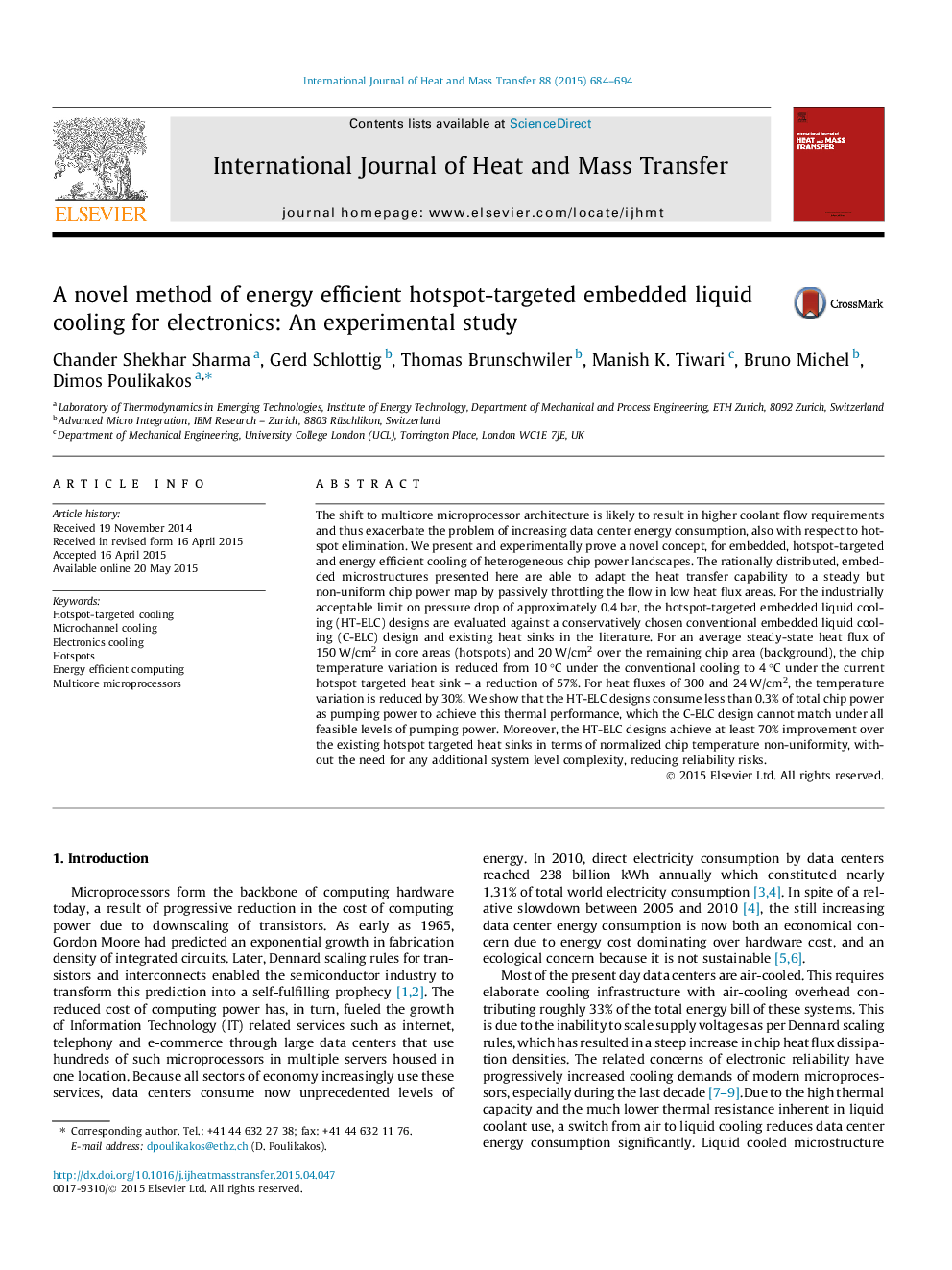| کد مقاله | کد نشریه | سال انتشار | مقاله انگلیسی | نسخه تمام متن |
|---|---|---|---|---|
| 657062 | 1458054 | 2015 | 11 صفحه PDF | دانلود رایگان |
عنوان انگلیسی مقاله ISI
A novel method of energy efficient hotspot-targeted embedded liquid cooling for electronics: An experimental study
ترجمه فارسی عنوان
یک روش جدید از خنک مایع تعبیه شده مجهز به انرژی کارآمد برای الکترونیک: یک مطالعه تجربی
دانلود مقاله + سفارش ترجمه
دانلود مقاله ISI انگلیسی
رایگان برای ایرانیان
کلمات کلیدی
موضوعات مرتبط
مهندسی و علوم پایه
مهندسی شیمی
جریان سیال و فرایندهای انتقال
چکیده انگلیسی
The shift to multicore microprocessor architecture is likely to result in higher coolant flow requirements and thus exacerbate the problem of increasing data center energy consumption, also with respect to hotspot elimination. We present and experimentally prove a novel concept, for embedded, hotspot-targeted and energy efficient cooling of heterogeneous chip power landscapes. The rationally distributed, embedded microstructures presented here are able to adapt the heat transfer capability to a steady but non-uniform chip power map by passively throttling the flow in low heat flux areas. For the industrially acceptable limit on pressure drop of approximately 0.4 bar, the hotspot-targeted embedded liquid cooling (HT-ELC) designs are evaluated against a conservatively chosen conventional embedded liquid cooling (C-ELC) design and existing heat sinks in the literature. For an average steady-state heat flux of 150 W/cm2 in core areas (hotspots) and 20 W/cm2 over the remaining chip area (background), the chip temperature variation is reduced from 10 °C under the conventional cooling to 4 °C under the current hotspot targeted heat sink - a reduction of 57%. For heat fluxes of 300 and 24 W/cm2, the temperature variation is reduced by 30%. We show that the HT-ELC designs consume less than 0.3% of total chip power as pumping power to achieve this thermal performance, which the C-ELC design cannot match under all feasible levels of pumping power. Moreover, the HT-ELC designs achieve at least 70% improvement over the existing hotspot targeted heat sinks in terms of normalized chip temperature non-uniformity, without the need for any additional system level complexity, reducing reliability risks.
ناشر
Database: Elsevier - ScienceDirect (ساینس دایرکت)
Journal: International Journal of Heat and Mass Transfer - Volume 88, September 2015, Pages 684-694
Journal: International Journal of Heat and Mass Transfer - Volume 88, September 2015, Pages 684-694
نویسندگان
Chander Shekhar Sharma, Gerd Schlottig, Thomas Brunschwiler, Manish K. Tiwari, Bruno Michel, Dimos Poulikakos,
